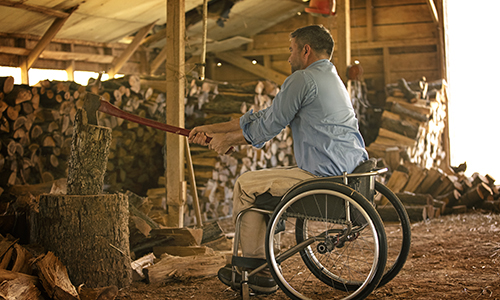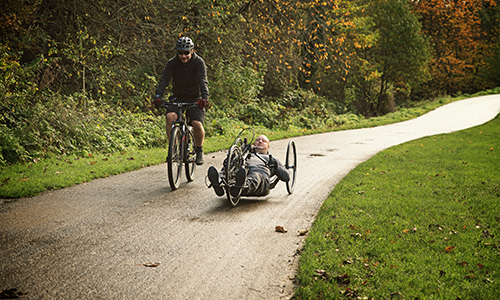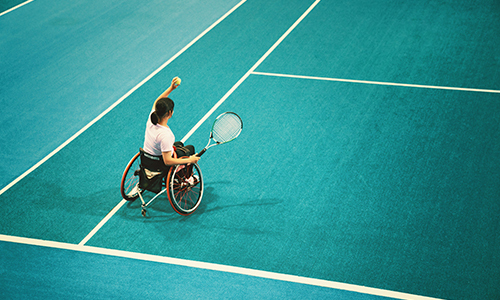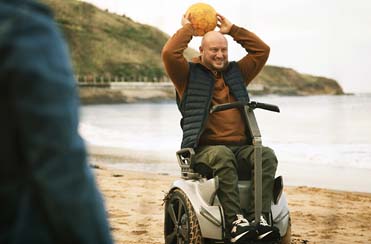Besides your wheelchair, adaptive equipment can help you safely increase your mobility at home and stay on your normal daily routine.
Your wheelchair is an essential tool to help you stay mobile, but other adaptive equipment is needed to get around well (and safely). After your spinal cord injury, you likely worked with an occupational therapist who may have visited your home to suggest some alterations and modifications to help you get around more easily in your wheelchair — ramps, railings, lifts.
Your therapist probably recommended other essential adaptive equipment as well – specially designed gear for specific daily or frequent tasks. The good news is that innovations in product design and the latest technology help increase mobility for those who have paralysis.
Let’s explore some of the essential adaptive equipment and assistive technology, gadgets, and gear you may need in your home.
Essential adaptive equipment for mobility
There’s an array of new products and assistive technology that can help you with your most common daily tasks at home. While not a complete list, here are some of the more helpful tools you may want to consider:
Voice-controlled smart devices: In the past, special light switches and other similar electrical functions may have required some modifications. Now you can modify your home with smart lights, thermostats, blinds, and more that can be controlled by your voice. You can even set them up to turn on and off televisions and audio-visual electronics that play music. These smart devices or hubs can also be used to make phone calls and even video chat.
Bathroom equipment: It’s vital to have mobility and access in your home’s restroom so you can have the independence and privacy you need. Work with your occupational therapists and caregivers to determine what you need for daily living tasks, including using the toilet and showering. For low-level paraplegia, you might need a tub transfer bench, shower chair, and a commode with an optional removable armrest. For people with a higher level of paraplegia or quadriplegia, a rolling shower chair can roll in and out of an adapted shower and can double as a commode. Installing grab bars in the shower and around the toilet for extra stability is a good idea too.
Kitchen and dining help: Whether you’ll be cooking or simply enjoying a meal whipped up by a family member or caregiver, you may need adaptive equipment. If you have difficulty grasping utensils or have limited control of your hands, specially adapted utensils can be purchased, or universal cuffs are handy gadgets that attach to almost anything. Plate guards can also be helpful, providing a barrier for you to scoop up food on your plate without spilling.
Other handy adaptive equipment: Another must-have gadget is a reacher that allows you to grab items from the floor, a counter, or a cabinet that is just out of reach or difficult to get to from your wheelchair or scooter. A doorknob extender is another handy device that transforms any doorknob into a lever, making opening and closing doors easier. A leg lifter is another simple tool that makes it easier for you to lift and maneuver your legs out of the way or transfer from your wheelchair, bed, or shower.
Stay updated with the latest mobility innovations
Your choices in adaptive equipment continue to evolve. Plus, smart devices, wearables, and other computer technologies and electronics will continue to offer even more conveniences and assistive technology options for those with a spinal cord injury. Check in regularly with your occupational therapists for new and innovative products that can help increase your mobility and make your daily living easier.
References:









